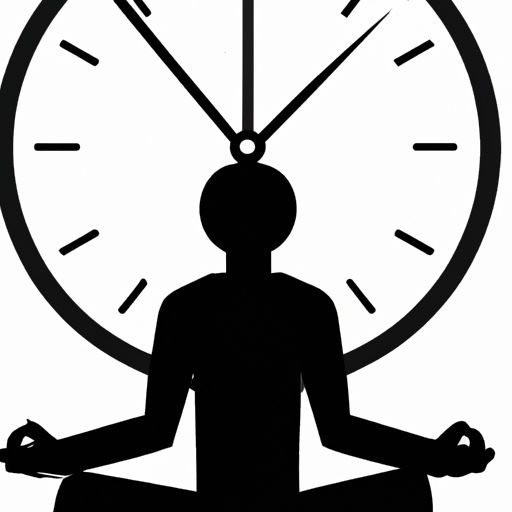In today’s fast-paced world, it’s easy to get caught up in the hustle and bustle of everyday life. We often find ourselves multitasking, juggling multiple responsibilities, and struggling to find a sense of balance. This can lead to stress, anxiety, and a feeling of being disconnected from ourselves and those around us. However, there is a powerful tool that can help us slow down, be more present, and cultivate a sense of inner peace. This tool is mindfulness. In this article, we’ll explore what mindfulness is, how it works, and how you can get started with this life-changing practice. Whether you’re a complete beginner or have some experience with mindfulness, this guide will provide you with the knowledge and tools you need to start incorporating mindfulness into your daily life. So, let’s dive in and explore the world of mindfulness together.
- 1. “Mindfulness 101: A Comprehensive Introduction to the Practice”
- 2. “Getting Started with Mindfulness: Tips and Techniques for Beginners”
- 3. “Mindfulness Made Easy: Incorporating the Practice into Your Daily Routine”
1. “Mindfulness: A Comprehensive Introduction to the Practice”

Mindfulness: A Comprehensive Introduction to the Practice
Mindfulness is the art of being present in the moment, fully engaged and aware of your surroundings, thoughts, and emotions. It is a practice that has been around for thousands of years and has been used in various cultures and traditions to help people find inner peace, reduce stress, and enhance their overall well-being.
At its core, mindfulness is about paying attention to the here and now. It is about being fully present in the moment, without judgment or distraction. It is a practice that can help you become more aware of your thoughts, feelings, and physical sensations. This awareness can help you identify and manage stress, anxiety, and other negative emotions.
Mindfulness can be practiced in many different ways, from meditation and deep breathing exercises to mindful eating and walking. The key is to find a practice that works for you and to make it a part of your daily routine.
To get started with mindfulness, it is important to find a quiet and comfortable space where you can sit or lie down without any distractions. Close your eyes and take a few deep breaths, focusing on the sensation of the air entering and leaving your body.
Next, slowly scan your body from head to toe, paying attention to any areas of tension or discomfort. Take a few moments to relax these areas and release any tension.
As you continue to breathe deeply, bring your attention to the present moment. Notice any thoughts or emotions that arise, but try not to judge or analyze them. Instead, simply acknowledge them and let them go.
With regular practice, mindfulness can help you develop a greater sense of inner peace, clarity, and focus. It can also help you cultivate a deeper connection with yourself and the world around you.
In summary, mindfulness is a powerful practice that can help you find greater happiness, peace, and fulfillment in life. By taking the time to be fully present in the moment, you can develop a greater sense of awareness, compassion, and gratitude. So why not give it a try today?
2. “Getting Started with Mindfulness: Tips and Techniques for Beginners”

Getting Started with Mindfulness: Tips and Techniques for Beginners
If you’re new to mindfulness, getting started may seem overwhelming. However, with some tips and techniques, you can begin your mindfulness practice and reap its benefits.
1. Start small: Begin with just a few minutes of mindfulness practice each day. You can gradually increase the time as you become more comfortable with the practice.
2. Find a quiet space: Choose a quiet space where you won’t be disturbed. This can be a designated area in your home or a peaceful outdoor location.
3. Focus on your breath: One of the simplest ways to begin your mindfulness practice is by focusing on your breath. Sit comfortably and tune in to the sensation of your breath moving in and out of your body.
4. Be non-judgmental: Mindfulness is about being present in the moment without judgment. When you notice your mind wandering, gently bring it back to your breath without criticizing yourself.
5. Use guided meditations: There are many resources available that offer guided meditations for beginners. These can be helpful in keeping you focused and providing guidance.
6. Practice regularly: Consistency is key when it comes to building a mindfulness practice. Set a regular time each day to practice, and stick to it as much as possible.
By following these tips and techniques, you can begin your mindfulness practice and experience the benefits of increased awareness, decreased stress, and improved well-being.
3. “Mindfulness Made Easy: Incorporating the Practice into Your Daily Routine”

Mindfulness Made Easy: Incorporating the Practice into Your Daily Routine
Integrating mindfulness into your daily routine may seem daunting at first, but it doesn’t have to be. Here are some tips to help you get started:
1. Start small: Begin with just a few minutes of mindfulness practice each day. As you become more comfortable with the practice, you can gradually increase the amount of time you dedicate to it.
2. Practice in the morning: Starting your day with a few minutes of mindfulness can set a positive tone for the rest of the day. You could try waking up a few minutes earlier to practice mindfulness before starting your day.
3. Use reminders: Set reminders throughout the day to help you remember to practice mindfulness. This could be a simple alarm on your phone or a note on your desk.
4. Incorporate mindfulness into daily activities: Mindfulness doesn’t have to be a separate activity from the rest of your day. You can practice mindfulness while doing everyday activities like brushing your teeth or washing the dishes. Simply focus your attention on the present moment and the task at hand.
5. Find a mindfulness buddy: Practicing mindfulness with a friend or family member can help keep you motivated and accountable. You could try setting up a regular time to practice together, or simply check in with each other to see how your mindfulness practice is going.
Remember, mindfulness is a practice, and like any practice, it takes time and effort to develop. Be patient with yourself and enjoy the process of incorporating mindfulness into your daily routine.
In conclusion, mindfulness is a powerful tool that can help us live more meaningful and fulfilling lives. By focusing on the present moment and observing our thoughts and feelings without judgment, we can improve our mental and physical health, reduce stress and anxiety, and cultivate greater happiness and well-being. Whether you’re just getting started with mindfulness or you’re looking for ways to deepen your practice, there are plenty of tips and techniques to help you along the way. By incorporating mindfulness into your daily routine, you can experience the benefits of this practice in all areas of your life. So why not give it a try today and see how mindfulness can transform your life for the better?




